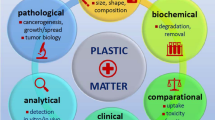Abstract
The absorption of four Alternaria toxins with perylene quinone structures, i.e. altertoxin (ATX) I and II, alteichin (ALTCH) and stemphyltoxin (STTX) III, has been determined in the Caco-2 cell Transwell system, which represents a widely accepted in vitro model for human intestinal absorption and metabolism. The cells were incubated with the four mycotoxins on the apical side, and the concentration of the toxins in the incubation media of both chambers and in the cell lysate were determined by liquid chromatography coupled with diode array detection and mass spectrometry (LC-DAD-MS) analysis. ATX I and ALTCH were not metabolised in Caco-2 cells, but ATX II and STTX III were partly biotransformed by reductive de-epoxidation to the metabolites ATX I and ALTCH, respectively. Based on the apparent permeability coefficients (Papp), the following ranking order for the permeation into the basolateral compartment was obtained: ATX I > ALTCH >> ATX II > STTX III. Total recovery of the four toxins decreased in the same order. It is assumed that the losses of STTX III, ATX II and ALTCH in Caco-2 cells are caused by covalent binding to cell components due to the epoxide group and/or the α,β-unsaturated carbonyl group present in these toxins. We conclude from this study that ATX I and ALTCH are well absorbed from the intestinal lumen into the portal blood in vivo. For ATX II and STTX III, intestinal absorption of the parent toxins is very low, but these toxins are partly metabolised to ATX I and ALTCH, respectively, in the intestinal epithelium and absorbed as such.




Similar content being viewed by others
References
Artursson P, Karlsson J (1991) Correlation between oral drug absorption in humans and apparent drug permeability coefficients in human intestinal epithelial (Caco-2) cells. Biochem Biophys Res Commun 175:880–885
Burkhardt B, Pfeiffer E, Metzler M (2009) Absorption and metabolism of the mycotoxins alternariol and alternariol-9-methyl ether in Caco-2 cells in vitro. Mycotoxin Res 25:149–157
Davis VM, Stack ME (1991) Mutagenicity of stemphyltoxin III, a metabolite of Alternaria alternata. Appl Environ Microbiol 57:180–182
EFSA (2011) Scientific opinion on the risks for animal and public health related to the presence of Alternaria toxins in feed and food. EFSA J 9:2407
Fleck SC, Burkhardt B, Pfeiffer E, Metzler M (2012) Alternaria toxins: altertoxin II is a much stronger mutagen and DNA strand breaking mycotoxin than alternariol and its methyl ether in cultured mammalian cells. Toxicol Lett 214:27–32
Liu GT, Qian YZ, Zhang P, Dong ZM, Qi YM, Guo HT (1992) Etiologic role of Alternaria alternata in human esophageal cancer. Chin Med J 105:394–400
Liu GT, Qian YZ, Zhang P, Dong ZM, Shi ZY, Zhen YZ, Miao J, Xu YM (1991) Relationships between Alternaria alternata and oesophageal cancer. IARC Sci Publ 105:258–262
Okuno T, Natsume I, Sawai K, Sawamura K, Furusaki A (1983) Structure of anti-fungal and phytotoxic pigments produced by Alternaria sps. Tetrahed Lett 24:5653–5656
Ostry V (2008) Alternaria mycotoxins: an overview of chemical characterization, producers, toxicity, analysis and occurrence in foodstuffs. World Mycotox J 1:175–188
Panigrahi S (1997) Alternaria toxins. In: D’Mello JPF (ed) Handbook of plant and fungal toxins. CRC Press, Boca Raton, pp 319–337
Press B, Di Grandi D (2008) Permeability for intestinal absorption: Caco-2 assay and related issues. Curr Drug Metab 9:893–900
Sambuy Y, Angelis I, Ranaldi G, Scarino ML, Stammati A, Zucco F (2005) The Caco-2 cell line as a model of the intestinal barrier: influence of cell and culture-related factors on Caco-2 cell functional characteristics. Cell Biol Toxicol 21:1–26
Schrader TJ, Cherry W, Soper K, Langlois I (2006) Further examination of the effects of nitrosylation on Alternaria alternata mycotoxin mutagenicity in vitro. Mutat Res 606:61–71
Stack ME, Mazzola EP (1989) Stemphyltoxin III from Alternaria alternata. J Nat Prod 52:426–427
Stack ME, Mazzola EP, Page SW, Pohland AE, Highet RJ, Tempesta MS, Corley DG (1986) Mutagenic perylenequinone metabolites of Alternaria alternata: altertoxins I, II, and III. J Nat Prod 49:866–871
Stack ME, Prival MJ (1986) Mutagenicity of the Alternaria metabolites altertoxins I, II, and III. Appl Environ Microbiol 52:718–722
Yee S (1997) In vitro permeability across Caco-2 cells (colonic) can predict in vivo (small intestinal) absorption in man—fact or myth. Pharm Res 14:763–766
Acknowledgments
This study was supported by a fellowship from the state of Baden-Württemberg to S.C.F. We thank Prof. Joachim Podlech and Dr. Gregor Nemecek (Institute of Organic Chemistry, Karlsruhe Institute of Technology, Germany) for the NMR spectra of STTX III, and Dr. Michele Solfrizzo (Istituto di Scienze delle Produzioni Alimentari, Bari, Italy) for the kind gift of ATX I.
Conflict of interest
None
Author information
Authors and Affiliations
Corresponding author
Rights and permissions
About this article
Cite this article
Fleck, S.C., Pfeiffer, E. & Metzler, M. Permeation and metabolism of Alternaria mycotoxins with perylene quinone structure in cultured Caco-2 cells. Mycotoxin Res 30, 17–23 (2014). https://doi.org/10.1007/s12550-013-0180-0
Received:
Revised:
Accepted:
Published:
Issue Date:
DOI: https://doi.org/10.1007/s12550-013-0180-0




